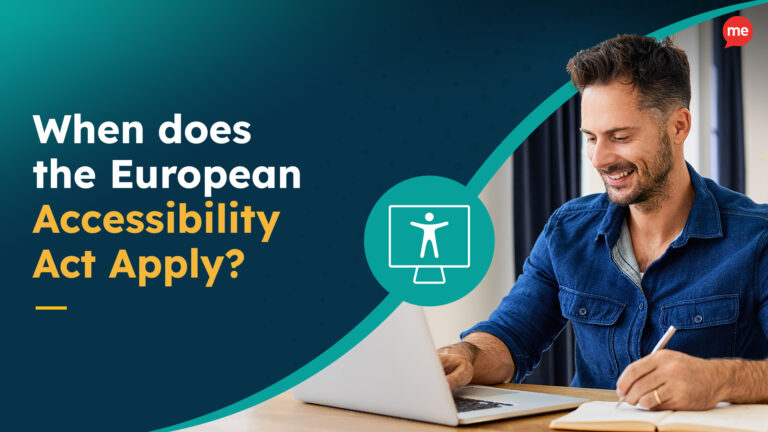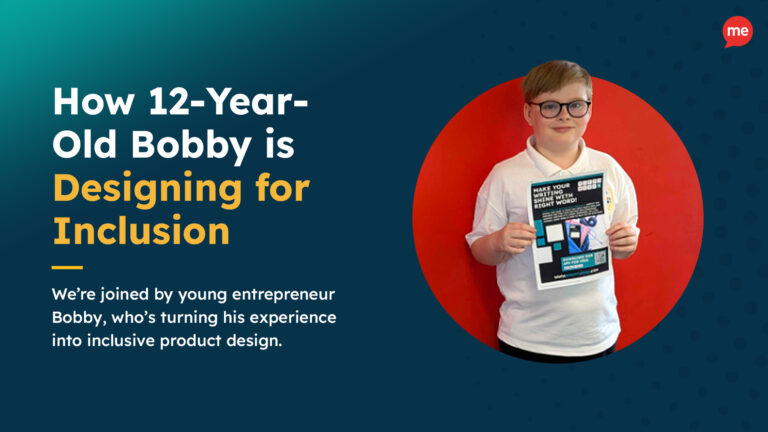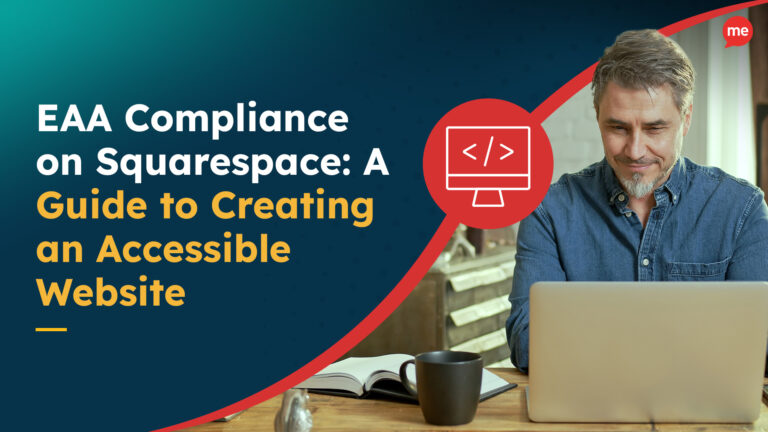Get Your Free Accessibility & Inclusion Toolkit
Download NowWebsite accessibility issues can leave a huge proportion of your visitors unable to fully access your website. A lot of website owners aren’t aware of the problems their website presents for a wide variety of users with different disabilities. This article will discuss the most common website accessibility issues, who they impact and why it’s important to fix them.
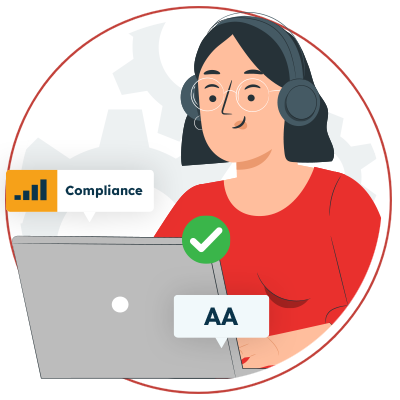
What are Accessibility Issues?
Accessibility issues refer to barriers or obstacles that prevent individuals with disabilities from accessing, navigating or engaging with content on a website. Accessibility issues can arise when individuals experience any of the following conditions:
- Visual Impairment
- Hearing Impairment
- Cognitive and Learning Disabilities
- Motor Impairment
- Speech Impairment
- Neurological Limitations
Traditionally, these disabilities would have prevented users from gaining full access to websites. But, with the introduction of various assistive technologies, this has been able to provide a solution for millions of people world-wide. Yet, unfortunately not all websites are implementing these features and many are still unaware.
Why is accessibility important?
Website accessibility is important because it ensures that people with disabilities can access and use websites effectively. In today’s digital age, websites serve as essential gateways to information, services, and opportunities. By making websites more accessible, individuals with visual, hearing, cognitive, or motor impairments can navigate, perceive, and interact with online content just like anyone else.
Accessible websites promote inclusivity, equal access, and participation in the digital world. Allowing people with disabilities to fully engage websites in a way that is as easy as possible. Ensuring they are not prevented from accessing information and services that would otherwise be available to individuals without their condition.
Additionally, website accessibility is not only a moral and ethical responsibility but also a legal requirement in many countries. It ensures compliance with accessibility standards and regulations such as the WCAG Guidelines.

Free Accessibility Check of your Website
Finding accessibility issues is now easier than ever. Recite Me offers a free automated scan of your website’s homepage to highlight non-compliance. You’ll get recommendations on how to fix them, helping to improve your accessibility score.
Most Common Website Accessibility Issues
There is a huge amount of individual accessibility criteria and issues you will need to consider. However, there are a few that stand out as being the most common, these include:
1. Colour Contrast
Low color contrast is an accessibility issue for websites because it creates difficulties for individuals with visual impairments or certain types of color blindness. When the contrast between text and background colors is insufficient, the content becomes harder to perceive and read.
When designing websites, it’s essential to choose color combinations that offer significant contrast. This means using darker text on a lighter background or vice versa. By ensuring an adequate contrast ratio, websites become more accessible to individuals with visual impairments, the elderly, or those who view content in less-than-ideal lighting conditions.
2. Lack of alternative text (alt text) for images
People who rely on the use of screen readers to understand web page content require web developers to create accessible alt text for images. If there is no alt text added, then the user will be unaware of the image and the context it provides to the written text.
The alt text of the image should describe the context of the image in a clear and concise manner. An example of this in practice would be if you had a street view image of a café, the alternative text would be something like “street view of Lucy’s Cafe in Norwich”.
For images that provide no contextual factors and are used purely for visual purposes, then null alt text should be used. When the alt attribute is left empty (alt=””) or “null” has been added, this will indicate to the screen reader that the image does not have any descriptive text associated with it. This is also important as it prevents screen readers from reading the file name of the image.
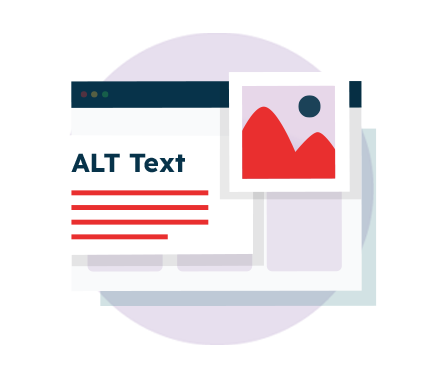
3. Poorly described text links
Poorly described text links pose an accessibility issue for websites because they hinder the ability of users with disabilities to use assistive technologies, to navigate and understand the content.
When text links are not adequately described or labeled, users who rely on screen readers or keyboard navigation encounter difficulties. Instead of providing meaningful information, generic terms like “click here” or “read more” offer little context or indication of the destination or purpose of the link.
In order to create a more accessible website, brands should focus on creating descriptive text links. For example, an article about the best protein powders should be labeled “best protein powders”.
4. Inaccessible forms
For individuals who use screen readers, properly labeled form elements provide essential information about input fields, checkboxes, and dropdown menus. Without proper labeling, these users may struggle to understand the purpose or type of information required in each field, making it difficult to accurately complete the form.
In addition, individuals with motor impairments who rely on keyboard navigation may face difficulties when forms lack proper structure and instructions. Clear instructions help users understand how to navigate through the form and input data correctly. Without these instructions, users may become frustrated or unable to complete the form successfully.
Furthermore, error messages are also crucial in creating accessible forms. When errors occur, users with disabilities need clear and descriptive error messages to understand what went wrong and how to correct it. Inaccessible error messages that lack specific instructions or explanations can leave users confused and unable to fix the issues they encounter.
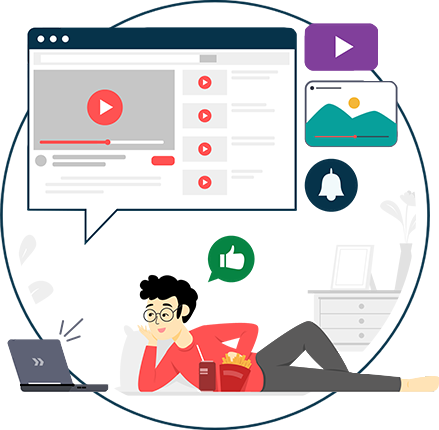
5. Inaccessible Multi-media
There are two types of users inaccessible multi-media can affect, those hard of hearing or deaf and those who are blind or have visual impairments. Video content is often added without written transcripts, captions or subtitles, this makes it inaccessible for many people.
Visually impaired users rely on written screen reader accessibility to provide the context provided by non-audio sections of the video such as actions, setting and visual details. Additionally, those who are hard of hearing, rely on written transcripts or subtitles to read themselves, to gain context and understanding from the videos.
6. Unstructured headings
Headings provide a clear and hierarchical structure to content, allowing users to navigate through different sections and understand the relationship between them. Screen reader users, in particular, heavily rely on headings to skim or jump to specific sections of a webpage. Without properly structured headings, users may experience confusion, frustration, or difficulties in finding the desired content.
Website owners should ensure headings are added in the proper hierarchical structure. Starting with H1, followed by H2s, H3s and H4s. There should only be one H1 on the page, typically the page title, followed by numerous H2s which outline the core sections of the page. Within these H2s, users may find H3s and H4s for different sub-topics, although these are generally used sparingly.
7. Keyboard Accessibility
Users who experience mobility impairments or motor disabilities can find it challenging to use a mouse in the same way. It is often more difficult to get the same degree of accuracy with their clicks, for this reason keyboard accessibility is necessary.
The idea itself is simple, every section of the website should be accessible without a mouse, using only keyboard controls. Users should easily be able to navigate their way through the website without any errors or confusion. To test your website’s accessibility for this factor, try navigating using only the tab or spacebar key.
8. Inaccessible Documents
Inaccessible documents are a common accessibility issue for websites because they prevent equal access to information. Accessible documents are important as they provide a way for users with disabilities to access, navigate and understand PDFs, Word Documents, Powerpoint Presentations and more.
For individuals with visual impairments, inaccessible documents without proper tagging or alternative text for images prevent the use of screen readers or other assistive technologies to access the content. Without these assistive technologies for the blind and visually impaired, users are unable to comprehend the information conveyed within the documents.
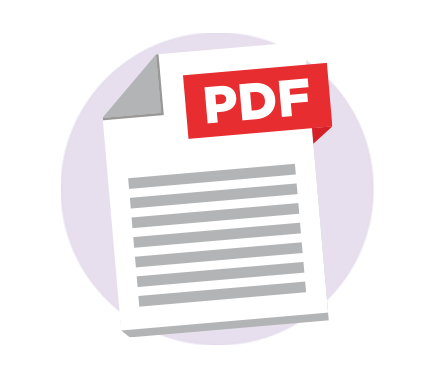
Inaccessible documents also affect individuals with cognitive disabilities or learning difficulties. Lack of clear structure, inconsistent formatting, or complex language can make it difficult for these users to understand and follow the content. Additionally, individuals with motor impairments who rely on keyboard navigation may encounter difficulties in navigating through inaccessible documents.
To address these accessibility issues, documents should be created with accessibility in mind. This involves proper tagging and labelling, use of alternative text for images, appropriate heading structure, clear and concise language, and logical reading order.
Our 40-page Digital Accessibility & Inclusion Toolkit helps businesses break down online barriers and make a real impact. It offers practical advice on all aspects of digital accessibility, from writing an accessibility statement to accessible website tips and inclusive hiring.

How to fix a website’s Accessibility Issues?
In order to fix your site’s accessibility issues, you first have to detect them. The Recite Me website accessibility scanner is perfect for this, it can be used to identify the issues and provide a suggestion on how to fix them. Or you can go one step further and look to implement the Recite Me Assistive Toolbar. Which provides a range of features that allow users with disabilities to customise your website to their needs, book a demo today.

